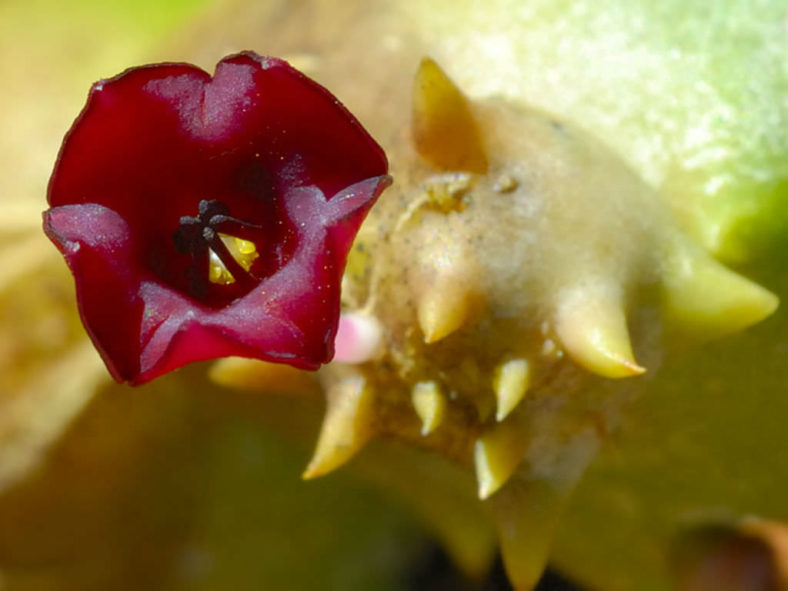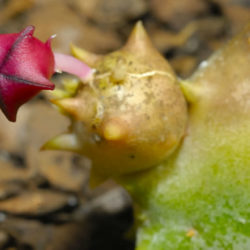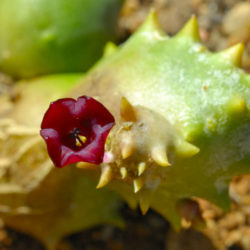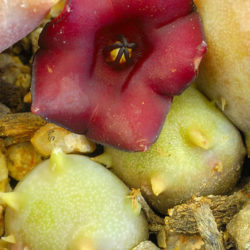Scientific Name
Stapeliopsis pillansii (N.E. Br.) Bruyns
Synonym(s)
Ceropegia pillansioides, Neopectinaria pillansii, Pectinaria pillansii
Scientific Classification
Family: Apocynaceae
Subfamily: Asclepiadoideae
Genus: Stapeliopsis
Description
Stapeliopsis pillansii is a dwarf, mat-forming succulent with prostrate, dull green stems with conical tubercles joined into four angles along the stem when it is young. As the stems mature, there remain only four rows of teeth along the stem without any sign of the join between the tubercles. The stems can grow up to 6 inches (15 cm) long and 0.8 inches (2 cm) thick. They are grey to purplish above and paler, often pinkish below.
This plant mainly produces its flowers on the underside of stems at or just below the surface of the soil on a short knobbly peduncle. The flowers are red to deep maroon, and this color continues into the pedicels and the peduncle. The corolla is pear- to bell-shaped and up to 0.6 inches (1.5 cm) in diameter. The corona is somewhat darker than the rest of the flower, and the lobes are edged with blackish.
Origin
Stapeliopsis pillansii is native to South Africa. It occurs in the southeastern part of the Great Karoo in the Western Cape province, growing in low stony ridges or flat gravelly areas under small shrubs.

Hardiness
USDA hardiness zone 10b to 11b: from 35 °F (+1.7 °C) to 50 °F (+10 °C).
How to Grow and Care
Stapeliads are relatively easy to grow. However, they should be treated as outdoor plants as they will easily rot indoors and cannot flower without exposure to outdoor temperature fluctuations. They should be grown under cover so that watering can be controlled. They require a reasonable amount of sunlight to promote flowering and maintain a well-shaped plant. Very shady positions will produce very poor flowering. Stapeliads come from climates where they survive extremely high temperatures in the summer months, so most growth is in spring and autumn, with flowering in autumn when the weather starts to cool down. Water in moderation when needed in the growing season, ensuring the soil is fairly dried out between waterings. Do not water between November 1 and March 1.
The easiest and best way to propagate Stapeliads is from stem cuttings which can be taken virtually throughout the year. Seed is also a method of propagation.
See more at How to Grow and Care for Stapeliads.
Links
- Back to genus Stapeliopsis
- Succupedia: Browse succulents by Scientific Name, Common Name, Genus, Family, USDA Hardiness Zone, Origin, or cacti by Genus
Photo Gallery
Click on a photo to see a larger version.


